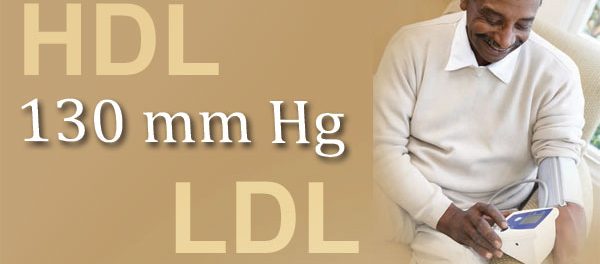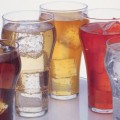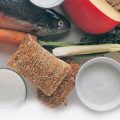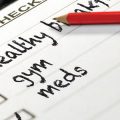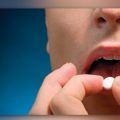What Do My Heart-Health Numbers Mean?
By Martha Funnell, MS, RN, CDE
Whenever you visit your health care provider, it can seem as if a lot of time is spent talking about your numbers. These numbers tell a story—one that is important for you to understand, as well.
BLOOD PRESSURE
Blood pressure results show two things:
- The amount of force on your blood vessel walls when your heart pumps (top number).
- When your heart relaxes between beats (bottom number).
You have high blood pressure if the top number, bottom number or both are too high. Along with high blood glucose levels, high blood pressure raises your risk for strokes, heart attacks, kidney damage and eye disease. The goal for most people with diabetes is below 130/80 mm Hg.
➧ To help lower your blood pressure you can:
- lose weight and stay at a healthy weight.
- stop smoking.
- eat less salt.
- take blood pressure medicine as directed.
- change the dose or type of blood pressure medicine.
- exercise more.
- limit alcohol to less than two drinks per day.
THE GOOD, THE BAD AND THE UGLY
Cholesterol is a waxy, fat-type substance in your blood. Your body makes some cholesterol from saturated fats, and it is also found in certain foods. High cholesterol adds to your risk for heart and blood vessel disease. There are three different kinds of cholesterol— sometimes known as “The Good, the Bad and the Ugly”— the good cholesterol (HDL), the bad cholesterol (LDL) and the ugly (triglycerides.)
» GOOD CHOLESTEROL
The good cholesterol HDL helps to get rid of some of the bad cholesterol in your body. It protects you from heart and blood vessel disease. The higher your HDL reading, the better. The HDL goal for most men with diabetes is above 40; women above 50.
➧ To help raise your HDL, you can:
- be more active.
- lower your triglyceride level.
- use oils, such as canola, olive and grapeseed oil, in place of saturated (hard) fats.
- eat more baked or broiled cold-water fish.
» BAD CHOLESTEROL
The bad cholesterol LDL deposits fat in your blood vessels and puts you at risk for a heart attack or stroke. The lower your LDL reading, the better. The LDL goal for most people with diabetes is less than 100.
➧ To help lower your LDL you can:
- eat less saturated (hard) trans fat and cholesterol foods like butter, bacon, shortening.
- eat skinless, lean meats.
- be more active.
- take medicine to lower cholesterol.
- eat more soluble fiber, such as dark green leafy vegetables and whole grain cereals.
- use margarines and dressings with added plant stanols/sterols.
» TRIGLYCERIDES
Triglycerides are another kind of fat that may raise your risk for heart attacks and strokes. High blood glucose levels and alcohol raise your triglyceride levels. The triglycerides goal for most people with diabetes is less than 150.
➧ To help lower your triglyceride levels, you can:
- lower your blood glucose levels.
- eat fewer sweets.
- drink less sweet liquids (including unsweetened fruit juice).
- drink less alcohol.
- eat more broiled or baked cold-water fish.
Want a lot of pay-off for your hard work? Weight loss and exercise help lower your blood pressure, cholesterol and blood glucose levels. Using the information you get from your numbers can help you live a longer, healthier life.

